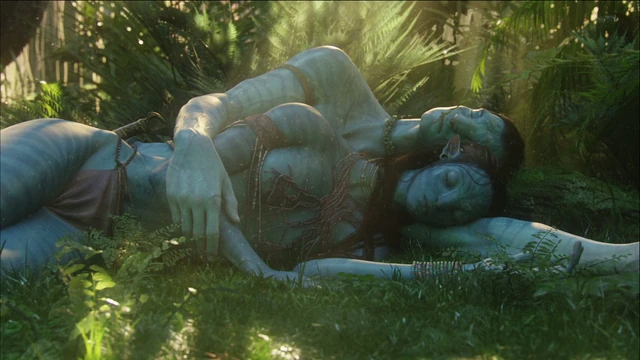
Todd Cherniawsky, supervising art director, could be considered the real storyteller behind Avatar, which opened in 3D this weekend. You could almost turn off the dialogue and not only still understand what’ s happening, but understand it better.
The quickest possible synopsis: wheelchair-bound ex-Marine Jake Scully signs up for a tour on the moon Pandora to run an Avatar—a host body fusing the pilot’s DNA with a native Na’vi body—for a research project bound to the rapacious agenda of a mining company protected by a Marine contingent.
Much of the plotted tension, between the Na’vi, who live completely in harmony with nature in a mysterious biological link, and the forces that would uproot them in search of the valuable mineral “Unobtanium,” happens visually. To work, the film needs you to connect with the Na’vi, but rather than courting your brain with narrative, it courts your eyes, cutting from green, blue, and phosphorescent forests of the moon surface to the dusty green and gray of the mining base. (It’s like stepping out into the lobby after having been inside a really good aquarium).
Whatever your intellectual or moral reaction might be to real-world stories of environmental destruction, your senses revolt in response to any threat to the Na’vi’s forest home.
Cameron at work. James Cameron’s Avatar: A symphony in blue and green.
